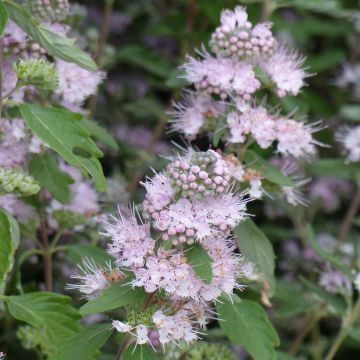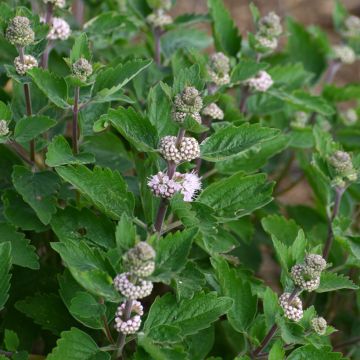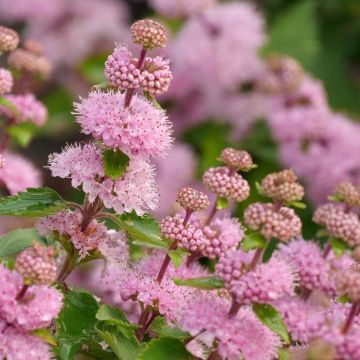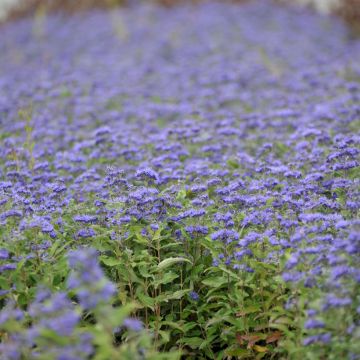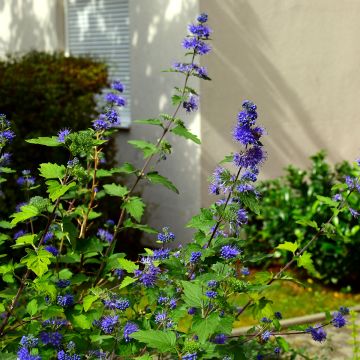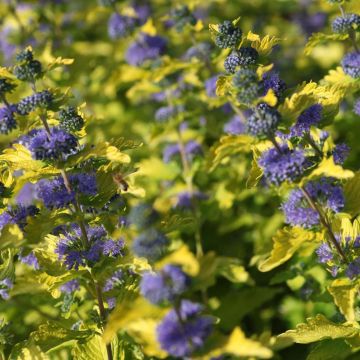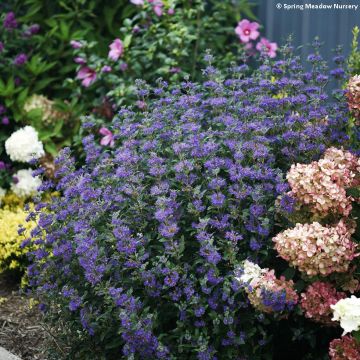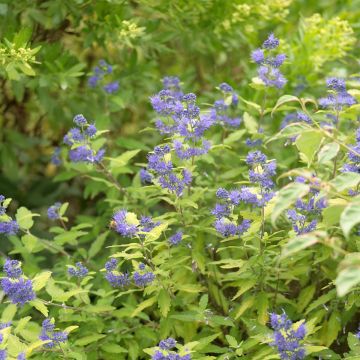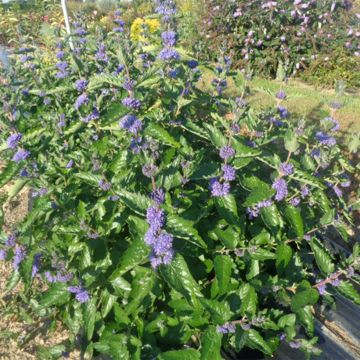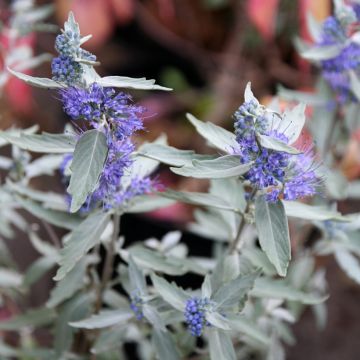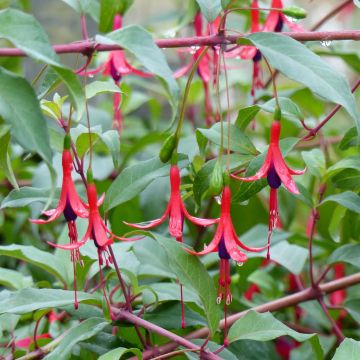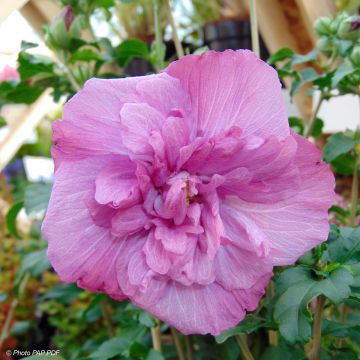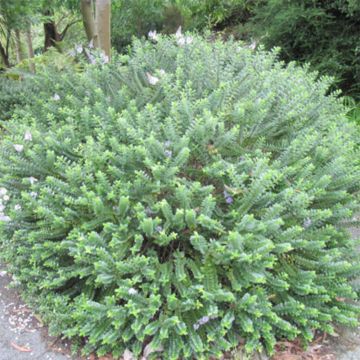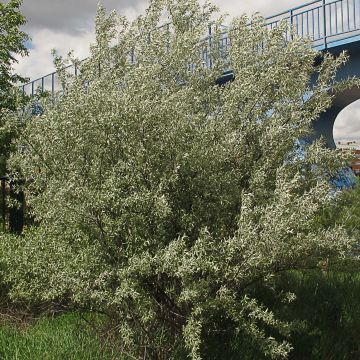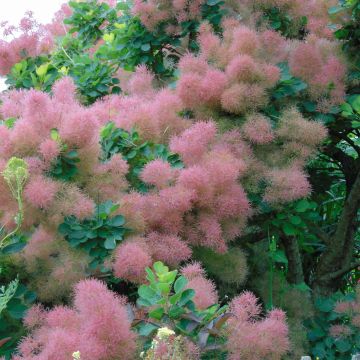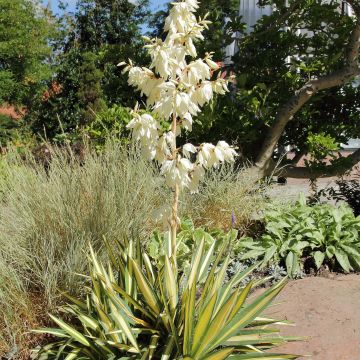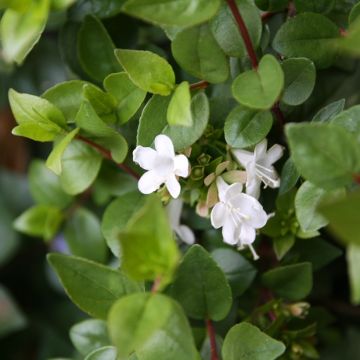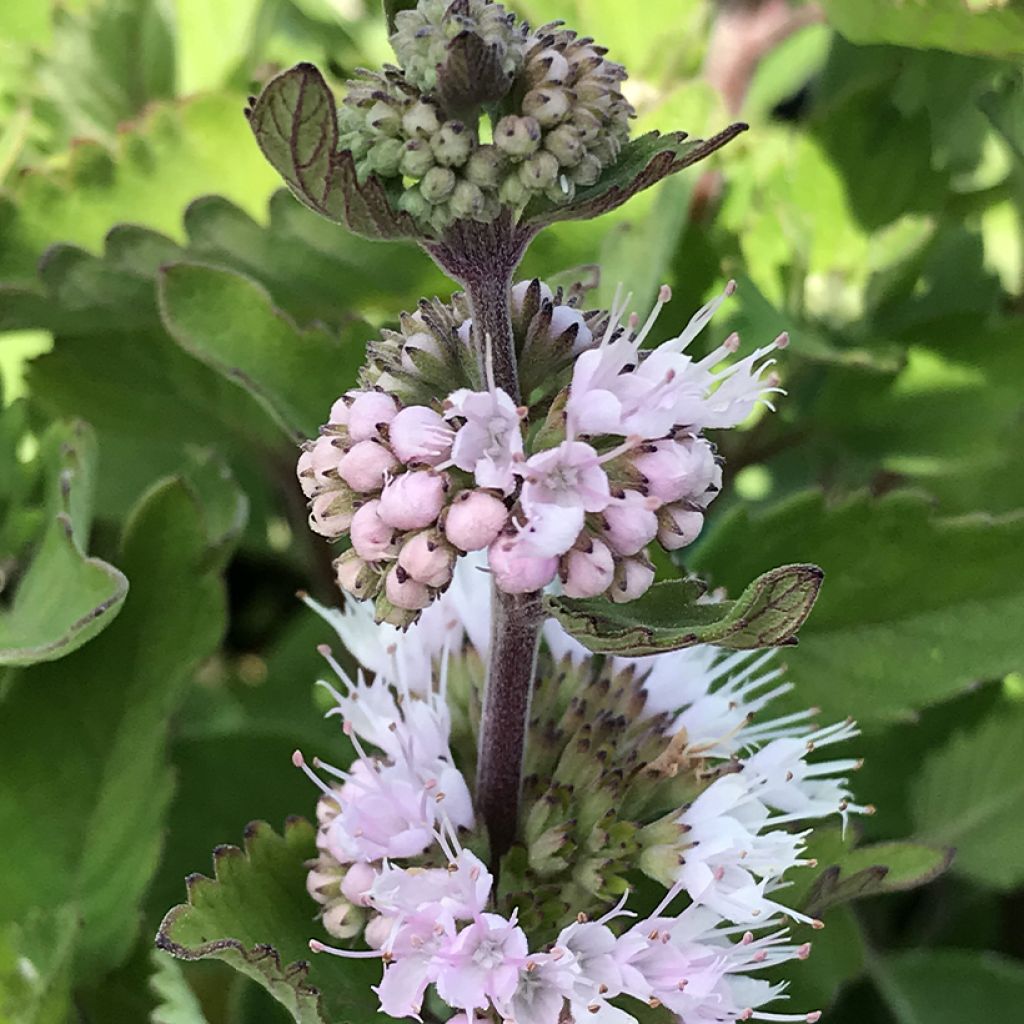

Caryopteris x clandonnensis Pavilion Pink - Spirée bleue
Caryopteris clandonensis Pavilion Pink - Bluebeard
Caryopteris x clandonensis Pavilion Pink ®
Bluebeard, Blue Spirea, Blue Mist Shrub
Why not try an alternative variety in stock?
View all →This plant carries a 24 months recovery warranty
More information
We guarantee the quality of our plants for a full growing cycle, and will replace at our expense any plant that fails to recover under normal climatic and planting conditions.
From €5.90 for pickup delivery and €6.90 for home delivery
Express home delivery from €8.90.
Does this plant fit my garden?
Set up your Plantfit profile →
Description
Caryopteris x clandonensis Pavilion Pink ® is a blue spirea with pink flowers that combines several qualities: it is a hardy selection, with a nice compact and bushy habit, which produces more dense and abundant flower spikes than usual pink varieties. This small shrub or subshrub is very floriferous from late summer to early autumn. It also has beautiful foliage, which exudes a scent of turpentine when crushed. Caryopteris is an ornamental plant that is also beneficial for pollinators and requires little water when planted in the ground. It can be planted in a sunny bed, a rock garden, or even in a pot on the balcony.
Caryopteris x clandonensis Pavilion Pink is part of the Pavilion™ series developed by Danziger. This series comes in 3 flower colours and is characterized by abundant flowers produced on shorter internodes, giving the impression that the plant is covered with flowers above lush green foliage. Caryopteris x clandonensis is a hybrid resulting from the cross-breeding of Caryopteris incana, an Asian shrub known as 'Bluebeard', and Caryopteris mongolica, a more hardy shrub native to colder regions of Mongolia and northern China. All these small shrubs belong to the Verbenaceae family.
The Pavilion Pink variety forms a dense bush that can reach a height and width of 45cm (17.7in), depending on growing conditions. It blooms from August to October, with the flowering period starting and ending earlier or later depending on the climate. Its inflorescences appear on the upper half of the current year's branches. They are composed of countless small pink buds grouped in very dense whorls. The buds open into small flowers with a delicate pink colour and prominent stamens. This flowering is particularly attractive to bees and nectar-feeding insects, and the shrub is often visited by many colourful butterflies. The deciduous foliage consists of thin, triangular, aromatic leaves with irregularly dentate edges, arranged in an opposite fashion on straight stems. They have a fairly dark green colour that may appear more or less greyish depending on soil dryness and heat. When crushed, they release a powerful aroma with resinous notes.
Caryopteris Pavilion Pink can be used in a border, alongside other compact and generous shrubs and bushy perennials such as shrubby Potentillas, catmints, lavenders, dwarf buddleias, shrubby salvias... A vibrant scene can be created in late summer by combining Caryopteris with evening primroses, California fuchsia, Turbinellus aster or other early-flowering asters. A group of 3 shrubs surrounding a pink or mauve repeat-flowering rose is a splendid sight in September: their different styles and colors of flowering are perfectly complementary.
Report an error about the product description
Plant habit
Flowering
Foliage
Botanical data
Caryopteris
x clandonensis
Pavilion Pink ®
Verbenaceae
Bluebeard, Blue Spirea, Blue Mist Shrub
Cultivar or hybrid
Other Caryopteris
Planting and care
Caryopteris are sun-loving plants that thrive in well-drained soil. They can be planted early in autumn, or in spring in colder regions, in a very sunny location and in a light, well-drained soil, even rocky or sandy, but still fairly deep. While Caryopteris is not afraid of limestone, it will be more beautiful in humus-rich soil. An overly waterlogged soil in winter will strongly affect its hardiness. In well-drained soil, this plant can tolerate temperatures as low as -12 to -15°C (10.4 to 5 °F). Prune in late winter or very early spring to maintain a compact habit and promote the emergence of flowers on the young shoots.
Planting period
Intended location
Care
-
, onOrder confirmed
Reply from on Promesse de fleurs
Summer-flowering shrubs
Haven't found what you were looking for?
Hardiness is the lowest winter temperature a plant can endure without suffering serious damage or even dying. However, hardiness is affected by location (a sheltered area, such as a patio), protection (winter cover) and soil type (hardiness is improved by well-drained soil).

Photo Sharing Terms & Conditions
In order to encourage gardeners to interact and share their experiences, Promesse de fleurs offers various media enabling content to be uploaded onto its Site - in particular via the ‘Photo sharing’ module.
The User agrees to refrain from:
- Posting any content that is illegal, prejudicial, insulting, racist, inciteful to hatred, revisionist, contrary to public decency, that infringes on privacy or on the privacy rights of third parties, in particular the publicity rights of persons and goods, intellectual property rights, or the right to privacy.
- Submitting content on behalf of a third party;
- Impersonate the identity of a third party and/or publish any personal information about a third party;
In general, the User undertakes to refrain from any unethical behaviour.
All Content (in particular text, comments, files, images, photos, videos, creative works, etc.), which may be subject to property or intellectual property rights, image or other private rights, shall remain the property of the User, subject to the limited rights granted by the terms of the licence granted by Promesse de fleurs as stated below. Users are at liberty to publish or not to publish such Content on the Site, notably via the ‘Photo Sharing’ facility, and accept that this Content shall be made public and freely accessible, notably on the Internet.
Users further acknowledge, undertake to have ,and guarantee that they hold all necessary rights and permissions to publish such material on the Site, in particular with regard to the legislation in force pertaining to any privacy, property, intellectual property, image, or contractual rights, or rights of any other nature. By publishing such Content on the Site, Users acknowledge accepting full liability as publishers of the Content within the meaning of the law, and grant Promesse de fleurs, free of charge, an inclusive, worldwide licence for the said Content for the entire duration of its publication, including all reproduction, representation, up/downloading, displaying, performing, transmission, and storage rights.
Users also grant permission for their name to be linked to the Content and accept that this link may not always be made available.
By engaging in posting material, Users consent to their Content becoming automatically accessible on the Internet, in particular on other sites and/or blogs and/or web pages of the Promesse de fleurs site, including in particular social pages and the Promesse de fleurs catalogue.
Users may secure the removal of entrusted content free of charge by issuing a simple request via our contact form.
The flowering period indicated on our website applies to countries and regions located in USDA zone 8 (France, the United Kingdom, Ireland, the Netherlands, etc.)
It will vary according to where you live:
- In zones 9 to 10 (Italy, Spain, Greece, etc.), flowering will occur about 2 to 4 weeks earlier.
- In zones 6 to 7 (Germany, Poland, Slovenia, and lower mountainous regions), flowering will be delayed by 2 to 3 weeks.
- In zone 5 (Central Europe, Scandinavia), blooming will be delayed by 3 to 5 weeks.
In temperate climates, pruning of spring-flowering shrubs (forsythia, spireas, etc.) should be done just after flowering.
Pruning of summer-flowering shrubs (Indian Lilac, Perovskia, etc.) can be done in winter or spring.
In cold regions as well as with frost-sensitive plants, avoid pruning too early when severe frosts may still occur.
The planting period indicated on our website applies to countries and regions located in USDA zone 8 (France, United Kingdom, Ireland, Netherlands).
It will vary according to where you live:
- In Mediterranean zones (Marseille, Madrid, Milan, etc.), autumn and winter are the best planting periods.
- In continental zones (Strasbourg, Munich, Vienna, etc.), delay planting by 2 to 3 weeks in spring and bring it forward by 2 to 4 weeks in autumn.
- In mountainous regions (the Alps, Pyrenees, Carpathians, etc.), it is best to plant in late spring (May-June) or late summer (August-September).
The harvesting period indicated on our website applies to countries and regions in USDA zone 8 (France, England, Ireland, the Netherlands).
In colder areas (Scandinavia, Poland, Austria...) fruit and vegetable harvests are likely to be delayed by 3-4 weeks.
In warmer areas (Italy, Spain, Greece, etc.), harvesting will probably take place earlier, depending on weather conditions.
The sowing periods indicated on our website apply to countries and regions within USDA Zone 8 (France, UK, Ireland, Netherlands).
In colder areas (Scandinavia, Poland, Austria...), delay any outdoor sowing by 3-4 weeks, or sow under glass.
In warmer climes (Italy, Spain, Greece, etc.), bring outdoor sowing forward by a few weeks.


































